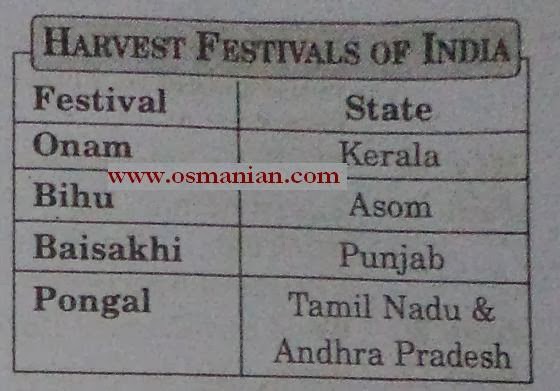AMENDMENTS TO THE CONSTITUTION
1. The Constitution (First Amendment) Act, 1950—This amendment provided for several new grounds of restrictions to the right to freedom of speech and expression and the right to practise any profession or to carry on any trade or business as contained in Article 19 of the Constitution. These restrictions related to public order, friendly relations with foreign States or incitement to an offence in relation to the right to freedom of speech, and to the prescribing of professional or technical qualifications or the carrying on by the State, etc., of any trade, business, industry or service in relation to the right to carry on any trade or business. The amendment also inserted two new Articles, 31A and 31B and the Ninth Schedule to give protection from challenge to land reform laws.
2. The Constitution (Second Amendment) Act, 1952—By this amendment, the scale or representation for election to the Lok Sabha was readjusted.
3. The Constitution (Third Amendment) Act, 1954—This amendment substituted entry 33 of List III (Concurrent List) of the Seventh Schedule to make it correspond to Article 369
4. The Constitution (Fourth Amendment) Act, 1955—Article 31 (2) of the Constitution was amended to re-state more precisely the State’s power of compulsory acquisition and requisitioning of private property and distinguish it from cases where the operation of regulatory or prohibitory laws of the States results in “deprivation of property”. Article 31A of the Constitution was also amended to extend its scope to cover categories of essential welfare legislation like abolition of zamindaris, proper planning of urban and rural areas and for effecting a full control over the mineral and oil resources of the country, etc. Six Acts were also included in the Ninth Schedule. Article 305 was also amended to save certain laws providing of State Monopolies.
5. The Constitution (Fifth Amendment) Act, 1955—This amendment made a change in Article 3 so as to empower President to specify a time limit for state legislatures to convey their views on the proposed Central laws affecting areas, boundaries, etc., of their states.
6. The Constitution (Sixth Amendment) Act, 1956—This amendment made some changes in Articles 269 and 286 relating to taxes on sale and purchase of goods in the course of inter-state trade and commerce. A new entry 92 A was added to the Union List of the Seventh Schedule to the Constitution.
7. The Constitution (Seventh Amendment) Act, 1956—This amendment Act purported to give effect to the recommendations of the State Reorganisation Commission and the necessary consequential changes. Broadly, the then existing states and territories were changed to have twofold classification of states and union territories. The amendment also provided for composition of
the House of the People, re-adjustment after every census, provisions regarding the establishment of new High Courts, High Court Judges, etc.
8. The Constitution (Eighth Amendment) Act, 1960—Article 334 was amended with a view to extending the period of reservation of seats for Scheduled Castes and Scheduled Tribes and to the Anglo-Indian community by nomination in Parliament and in the State Legislatures for a further period of ten years.
9. The Constitution (Ninth Amendment) Act, 1960—The purpose of this amendment is to give effect to the transfer of certain territories to Pakistan in pursuance of the agreement extended into between Governments of India and Pakistan. This amendment was necessitated in view of the Judgement of Supreme Court in In Re Berubari Union by which it was held that any agreement to cede a territory to another country could not be implemented by a law made under Article 3 but would only be implemented by an amendment of the Constitution.
10. The Constitution (Tenth Amendment) Act, 1961—This Act amended Article 240 and the First Schedule in order to include areas of Dadra and Nagar Haveli as a Union Territory and to provide for its administration under the regulation making powers of President.
11. The Constitution (Eleventh Amendment) Act, 1961—The purpose of this amendment was to amend Articles 66 and 71 of the Constitution to provide that the election of President or Vice President could not be challenged on the ground of any vacancy in the appropriate electoral college.
12. The Constitution (Twelfth Amendment) Act, 1962—This amendment sought to include Goa, Daman and Diu as a Union Territory and to amend Article 240 for the purpose.
13. The Constitution (Thirteenth Amendment) Act, 1962—By this amendment, a new Article 371A was added to make special provisions with respect to state of Nagaland in pursuance of an agreement between Government of India and Naga People’s Convention.
14. The Constitution (Fourteenth Amendment) Act, 1962—By this Act, Pondicherry was included in the First Schedule as a Union Territory, and this Act has also enabled the creation of Legislature by Parliamentary law for Himachal Pradesh, Manipur, Tripura, Goa, Daman and Diu and Pondicherry.
15. The Constitution (Fifteenth Amendment) Act, 1963—This amendment provided for increase in the age of retirement of High Court Judge and for the provision of compensatory allowance to judges who are transferred from one High Court to another. The Act also provided for appointment of retired judges to act as judges of High Court. Article 226 was also enlarged to empower High Court to issue direction, orders or writs to any Government authority, etc., if the cause of action for the exercise of such power arose in the territories wherein the High Court exercise jurisdiction Not withstanding that seat of such Government authority is not within those territories. The Act alsoprovided for the exercise of powers of Chairman of the Service Commissions, in their absence, by one of their Members.
NEXT



.JPG)
.JPG)
.JPG)
.JPG)
.JPG)
.JPG)
.JPG)


.JPG)
.JPG)
.JPG)
.JPG)